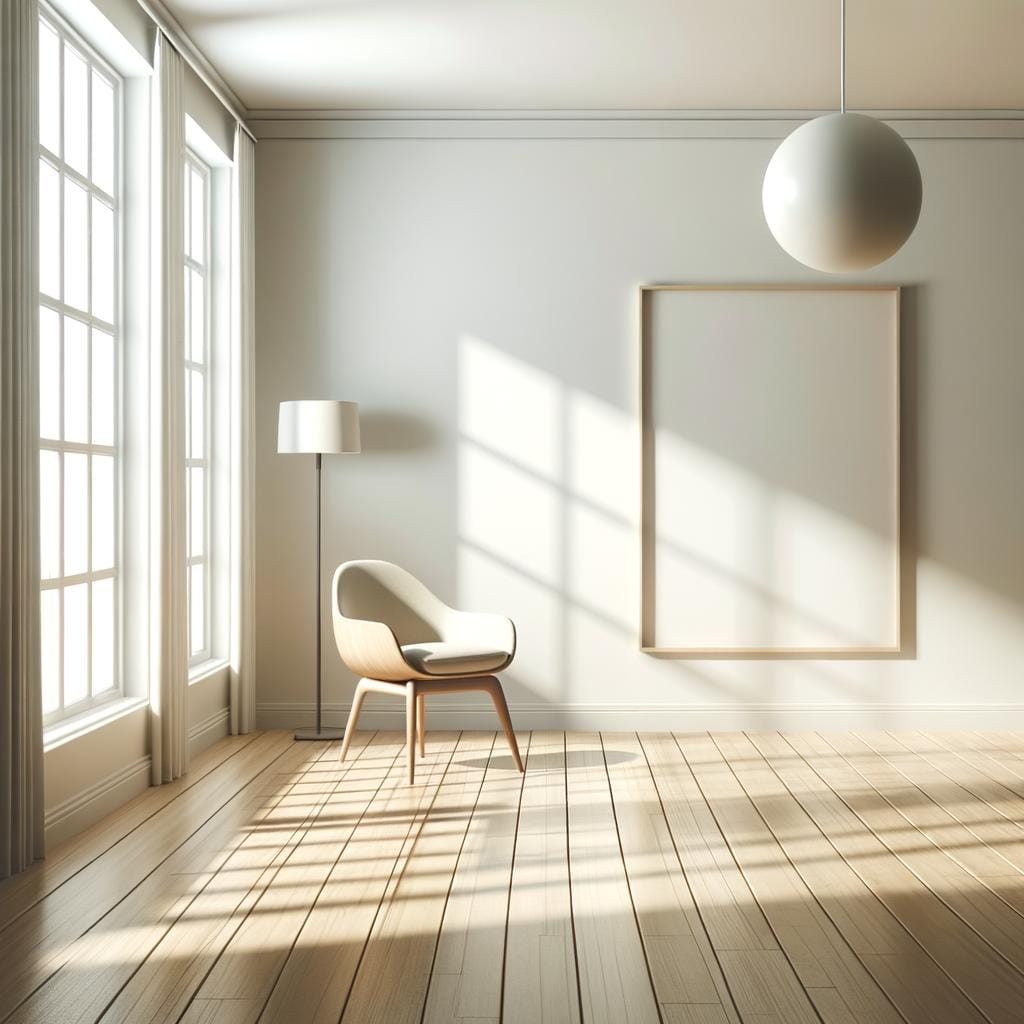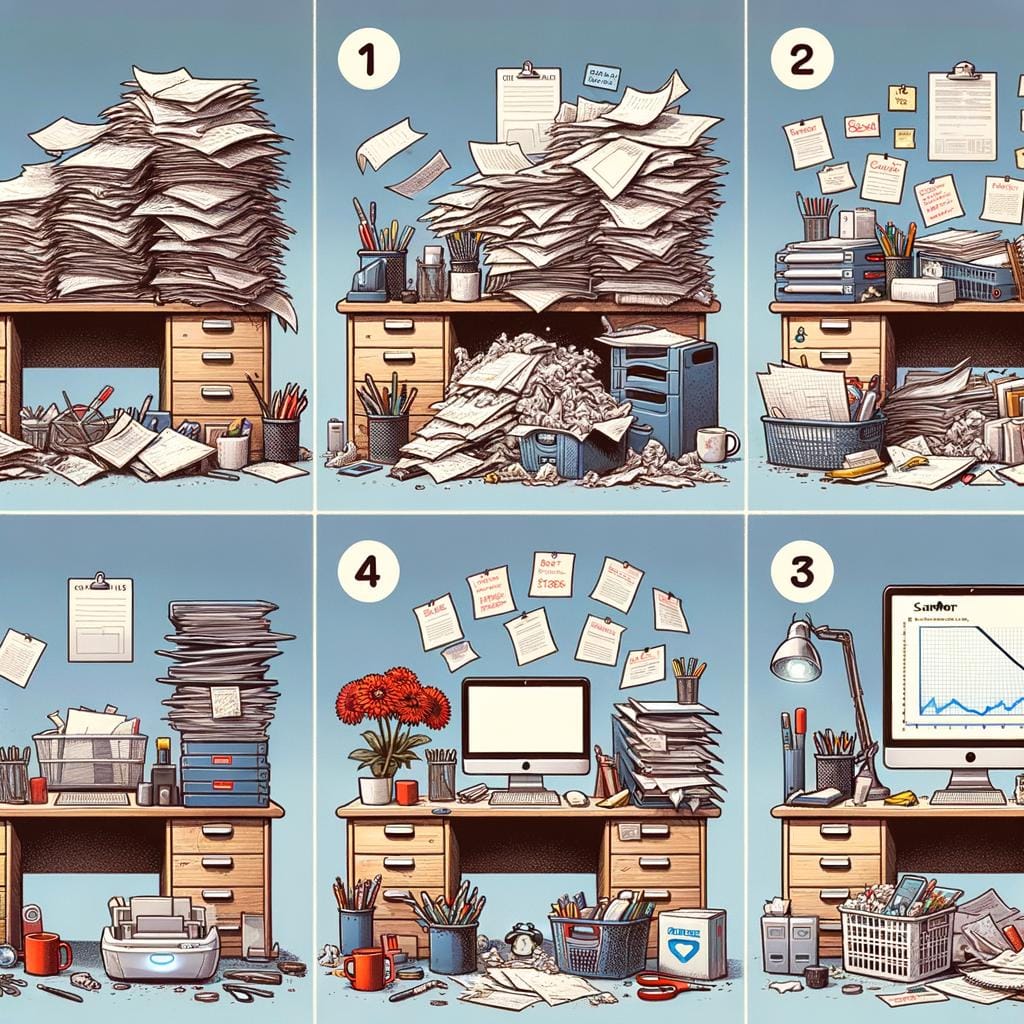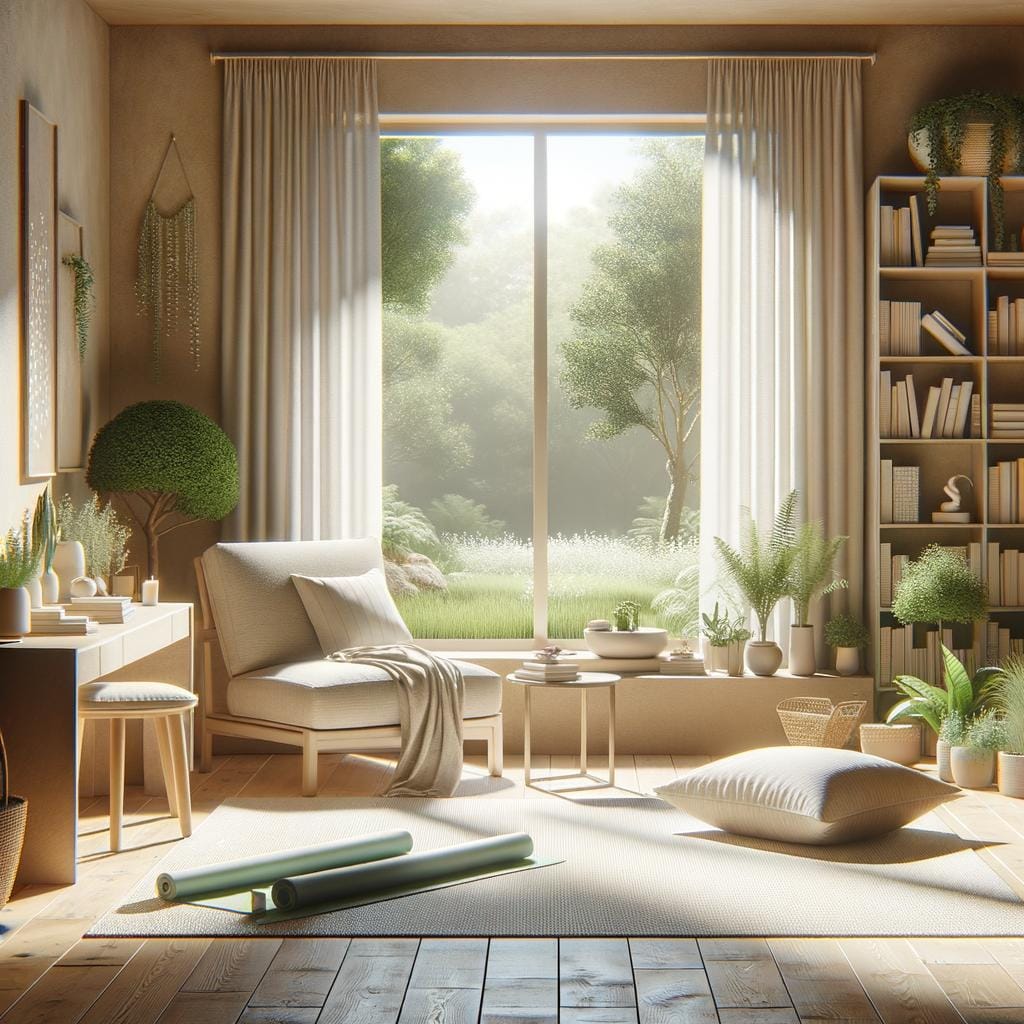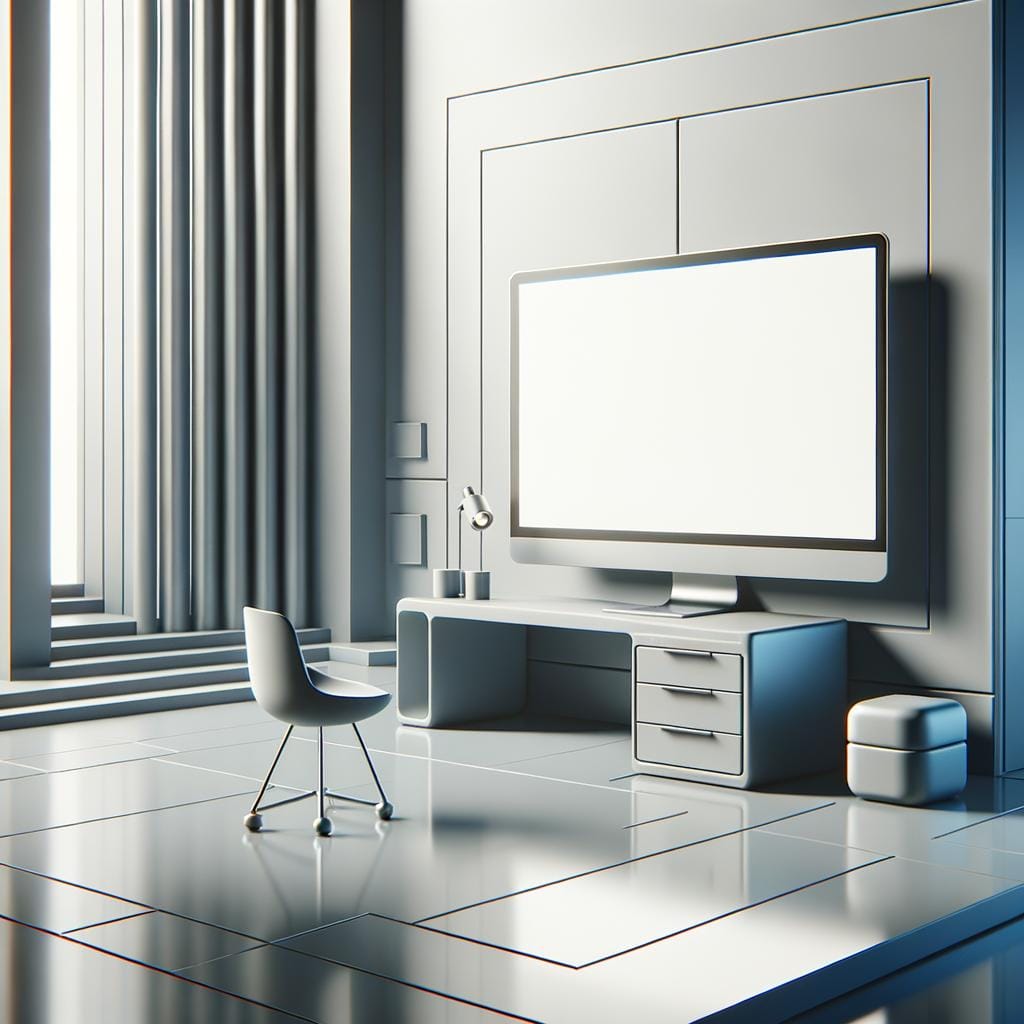In today’s fast-paced and technology-driven world, reducing visual clutter has become more important than ever. Visual clutter refers to the overwhelming presence of unnecessary elements in our physical and digital environments that can impede our focus, productivity, and mental well-being. From an overflowing desk to a cluttered computer desktop, visual chaos can have a significant impact on how we function in our daily lives.
The impact of visual clutter goes beyond just creating a messy space – it can actually hinder our ability to concentrate and maintain a sense of calm. Research has shown that excessive visual stimuli can lead to increased stress levels, decreased cognitive performance, and even contribute to feelings of overwhelm or anxiety. By understanding the sources of visual clutter in our surroundings, we can start to address these issues and create a more conducive environment for productivity and well-being.
Identifying sources of visual clutter in both physical spaces and digital interfaces is the first step towards creating a more streamlined and organized environment. From excessive decorations in your home to notifications pinging on your phone constantly, there are numerous triggers of visual overload that we may not even be aware of. By recognizing these sources, we can then begin implementing strategies to declutter our surroundings and reduce the overall visual chaos that surrounds us.
The Impact of Visual Clutter on Productivity and Mental Health
Visual clutter, whether physical or digital, can have a profound impact on both productivity and mental health. In today’s fast-paced world, we are constantly bombarded with stimuli that can overwhelm our senses and decrease our ability to focus. Research has shown that excessive visual clutter in our environment can lead to increased stress levels, reduced productivity, and even contribute to feelings of anxiety and overwhelm.
Effects on Productivity
When our physical or digital spaces are filled with visual clutter, it can be difficult to concentrate on the task at hand. The presence of unnecessary items or distractions in our surroundings can lead to a decrease in cognitive performance and make it challenging to stay organized and efficient. This, in turn, can result in decreased productivity levels and lower overall work satisfaction.
Impact on Mental Health
In addition to affecting productivity, visual clutter can also have negative implications for mental health. Constant exposure to chaotic environments can trigger feelings of stress and anxiety, making it harder to relax and unwind.
Cluttered spaces may also evoke a sense of being overwhelmed or out of control, leading to emotional strain and an overall decrease in well-being. By reducing visual clutter in our surroundings, we give ourselves the opportunity to create a more peaceful and harmonious environment that supports both our mental health and productivity.
Identifying Sources of Visual Clutter in Your Environment
Visual clutter can have a significant impact on our productivity and mental health. It refers to the presence of too many visual elements in our environment that can overwhelm our senses and distract us from focusing on important tasks. Identifying sources of visual clutter in your surroundings is the first step towards reducing visual chaos and creating a more serene space.
One common source of visual clutter is excessive decoration or furniture in a room. This can make the space feel cramped and chaotic, leading to feelings of stress and unease. Another source of visual clutter is disorganization and lack of storage solutions, which can result in items being left out in the open, adding to the overall messiness of a space.
Furthermore, electronic devices and their accompanying cables can also contribute to visual clutter. Having multiple gadgets lying around or a tangle of cords can create a sense of chaos and make it difficult to concentrate. By identifying these sources of visual clutter in your environment, you can begin to take steps towards decluttering and simplifying your surroundings, ultimately reducing visual distractions and improving overall well-being.
Strategies for Decluttering Physical Spaces to Reduce Visual Chaos
Reducing visual clutter in physical spaces is essential for creating an environment that promotes focus, productivity, and overall well-being. Visual clutter refers to the presence of excessive stimuli or distractions that overwhelm the eyes and the mind, making it difficult to concentrate and relax. By decluttering your physical surroundings, you can create a peaceful and organized space that allows your brain to function more efficiently.
One of the first steps in reducing visual clutter in your physical spaces is to identify sources of clutter. This can include items such as excess furniture, knick-knacks, unopened mail, or piles of paperwork.
Take a critical look at each area of your home or work environment and evaluate which items serve a purpose and which ones are simply adding to the visual noise. Once you have identified these sources of clutter, you can begin the process of decluttering and organizing your space.
Strategies for decluttering physical spaces vary depending on individual preferences and lifestyles. Some popular methods include the KonMari method, which focuses on keeping only items that “spark joy,” and the minimalist approach, which advocates for owning fewer possessions overall.
Regardless of the method you choose, the key is to be intentional about what you keep in your space and to create systems for organization that work for you. By simplifying your surroundings, you can reduce visual chaos and create a more calming atmosphere in which to live and work.
| Benefits of Decluttering | Statistics |
|---|---|
| Improved focus | 87% of people reported feeling more focused after decluttering their workspace |
| Reduced stress | Over 90% of individuals experienced reduced stress levels after decluttering their homes |
| Increase productivity | 62% saw an increase in productivity after organizing their physical spaces |
The Role of Digital Clutter in Visual Overload
In today’s digital age, the prevalence of digital clutter has significantly contributed to the visual overload that many individuals experience on a daily basis. Digital clutter refers to the excessive accumulation of electronic files, emails, notifications, and applications that can overwhelm and distract us from what truly matters.
This clutter not only affects our productivity but also has a negative impact on our mental well-being. By reducing digital clutter, we can create a more focused and serene digital environment.
One major source of digital clutter is the constant influx of notifications from various apps and platforms. These notifications can be disruptive and pull our attention away from important tasks, leading to reduced efficiency and increased stress levels. Additionally, having numerous open tabs or windows on our devices can also contribute to visual clutter, making it difficult to find what we need and adding unnecessary cognitive load.
To combat digital clutter and reduce visual overload, it is essential to establish clear boundaries with technology use. Setting specific times for checking emails or social media notifications can help prevent distractions throughout the day. It is also beneficial to regularly declutter your devices by organizing files into folders, deleting unused applications, and minimizing desktop icons. By implementing these strategies, you can create a more visually streamlined digital space that promotes focus and clarity.
| Digital Clutter | Impact |
|---|---|
| Excessive notifications | Reduced productivity and increased stress levels |
| Open tabs/windows | Difficulty in finding information and cognitive load |
Tips for Organizing and Streamlining Digital Spaces
In today’s digital age, our virtual environments can often become just as cluttered and overwhelming as our physical spaces. Digital clutter not only affects our productivity but also adds to the visual chaos we face on a daily basis. In order to reduce visual clutter and create a more peaceful digital landscape, it is essential to implement effective organizing and streamlining strategies.
Organizing Your Computer Files
One of the first steps in decluttering your digital space is organizing your computer files. Start by creating folders with clear and specific names to categorize different types of documents and photos.
Avoid saving files directly onto your desktop and instead store them in the appropriate folders within your documents or pictures directory. Regularly clean out unnecessary files and consider using cloud storage services like Google Drive or Dropbox for items you don’t need immediate access to but still want to keep.
Streamlining Your Email Inbox
Another common source of digital clutter is an overflowing email inbox. Take the time to unsubscribe from mailing lists you no longer find valuable, delete old emails that are no longer needed, and create folders or labels to organize important messages. Use filters or rules to automatically sort incoming emails into relevant folders based on sender or subject line. By keeping your inbox tidy and organized, you can reduce visual distractions and increase focus when working online.
Managing App Notifications
Many of us have various apps on our devices that constantly send notifications, adding to the visual noise we experience throughout the day. Take control of app notifications by reviewing which ones are essential versus those that are simply distracting. Disable notifications for non-essential apps or adjust settings to receive notifications only for critical updates. By reducing unnecessary alerts, you can create a more streamlined digital experience that enhances your overall well-being and focus.
By implementing these tips for organizing and streamlining your digital spaces, you can significantly reduce visual clutter in your life. Taking control of your digital environment is key to maintaining clarity, improving productivity, and promoting mental well-being in today’s fast-paced world dominated by screens and technology.
Mindfulness Practices to Reduce Visual Distractions
In today’s fast-paced and constantly connected world, visual clutter has become a common challenge that can impact our productivity and mental well-being. One effective way to combat visual distractions is through mindfulness practices. By being present in the moment and fully aware of our surroundings, we can reduce the overwhelming sensory input that often leads to visual clutter.
Here are some mindfulness practices you can incorporate into your daily routine to reduce visual distractions:
- Start your day with a few minutes of mindful breathing exercises to center yourself and clear your mind before diving into tasks.
- Practice gratitude by taking a moment to appreciate the beauty in your surroundings, which can help shift your focus away from clutter.
- Engage in mindful walking, where you pay attention to each step you take and consciously observe your environment without judgment.
By incorporating these mindfulness practices, you can train your brain to filter out unnecessary visual stimuli and create a more peaceful and focused environment. This heightened awareness can also lead to better decision-making, increased creativity, and improved overall well-being.
Remember that reducing visual clutter is an ongoing process that requires dedication and consistency. By integrating mindfulness practices into your daily life, you can cultivate a sense of calm amidst the chaos and create space for clarity and inspiration to thrive.
Incorporating Minimalist Design Principles in Your Life
Minimalist design principles can play a significant role in reducing visual clutter and creating a sense of calm and order in one’s life. By embracing minimalism, individuals can streamline their physical spaces and digital environments to eliminate distractions and promote focus. The essence of minimalist design lies in simplicity, functionality, and the elimination of unnecessary adornments that can overwhelm the senses.
Incorporating minimalist design principles in your life involves decluttering both your physical spaces and digital devices. Start by evaluating your surroundings and identifying items that do not serve a practical purpose or bring you joy. Consider adopting a “less is more” mindset when it comes to furniture, decor, and personal belongings. Opt for clean lines, neutral colors, and uncluttered surfaces to create a sense of openness and tranquility in your living or work spaces.
When it comes to digital clutter, apply the same minimalist approach by organizing files, apps, and notifications on your devices. Create folders to categorize documents and photos, delete unused apps or files, and disable notifications that are not essential. By establishing a simplified digital environment, you can reduce visual noise and enhance your productivity and mental well-being.
Remember that minimalism is not about deprivation but rather about intentional living and surrounding yourself with things that add value to your life. By incorporating minimalist design principles into your daily routines, you can create a harmonious balance between simplicity and comfort.
Case Studies and Success Stories of People Who Have Reduced Visual Clutter
In today’s fast-paced and digitally-driven world, reducing visual clutter has become increasingly important for maintaining focus, productivity, and mental well-being. Many individuals have successfully decluttered their physical and digital spaces to create a more organized and visually pleasing environment. Let’s take a look at some case studies and success stories of people who have embraced simplicity by reducing visual chaos in their lives.
Here are a few examples of how real people have effectively minimized visual clutter in various aspects of their lives:
- Sarah’s Minimalist Bedroom Transformation: Sarah, a working professional with a hectic schedule, found herself feeling overwhelmed by the chaos in her bedroom. She decided to adopt minimalist design principles and declutter her space by getting rid of unnecessary furniture, decor, and clothing. After implementing a more streamlined approach to organizing her belongings, Sarah noticed a significant improvement in her quality of sleep and overall sense of calm.
- John’s Digital Detox Journey: John, a tech-savvy entrepreneur, realized that he was spending an excessive amount of time scrolling through social media feeds and dealing with digital clutter on his devices. He made a conscious effort to reduce visual distractions by clearing out unused apps, organizing his files into folders, and setting boundaries for screen time. As a result, John experienced increased productivity at work, better focus during meetings, and reduced feelings of overwhelm.
- Elena’s Mindful Workspace Makeover: Elena, a creative freelancer juggling multiple projects, struggled to concentrate in her cluttered home office. Through practicing mindfulness techniques such as deep breathing exercises and setting intentions for each work session, she was able to create a more harmonious workspace. By incorporating elements of minimalist design like open shelving and neutral colors, Elena transformed her office into a tranquil haven that inspired creativity and boosted her workflow efficiency.
These case studies illustrate the transformative power of decluttering physical and digital spaces for enhancing productivity, mental clarity, and overall well-being. By learning from these success stories, you too can take steps towards reducing visual clutter in your own life to create a more serene and focused environment amidst the noise of modern-day living.
Conclusion
In a world inundated with stimuli and distractions, the concept of reducing visual clutter has never been more important. Visual clutter can impact productivity, mental health, and overall well-being. By identifying sources of visual clutter in our physical and digital environments, we can take steps to declutter and streamline our surroundings for a clearer and calmer existence.
Strategies for reducing visual clutter in physical spaces involve organizing belongings, minimizing decorative items, and creating designated areas for essentials. The goal is to create a visually calming environment that promotes focus and reduces stress. Similarly, in the digital realm, tackling digital clutter through organizing files, unsubscribing from unnecessary emails, and managing notifications can also contribute to a more streamlined experience.
Incorporating minimalist design principles into our lives can further aid in reducing visual chaos. By embracing simplicity and prioritizing quality over quantity, we can create spaces that are not only aesthetically pleasing but also functional and conducive to clarity of thought. Ultimately, by practicing mindfulness techniques and adopting minimalist approaches in our daily routines, we can navigate through the noise of modern life with greater ease and cultivate a sense of calm amidst the chaos.
Frequently Asked Questions
What Are the Guidelines to Avoid Cluttering in Visuals?
Guidelines to avoid cluttering in visuals include ensuring there is enough white space, using a consistent color scheme, limiting the use of different fonts, and simplifying the overall design. Clutter can confuse viewers and make it difficult for them to focus on key information.
What Is the Problem With Visual Clutter?
The problem with visual clutter is that it overwhelms the viewer and distracts from the main message being conveyed. When there is too much going on in a visual, it can be challenging for the audience to process the information effectively and can lead to important details getting lost in the chaos.
What Is ADHD Clutter?
ADHD clutter refers to an excessive amount of stimuli in an environment that can be particularly overwhelming for individuals with Attention Deficit Hyperactivity Disorder (ADHD). This clutter can make it difficult for those with ADHD to concentrate, stay organized, and maintain focus on tasks at hand. Keeping visual environments clear and organized can help individuals manage their symptoms more effectively.

Hello, I’m April Denton, your go-to expert for all things home decluttering and organization. With over a decade of experience helping individuals transform their living spaces into serene, clutter-free sanctuaries, I am passionate about the life-changing benefits of decluttering. My journey into the world of organization began out of necessity, juggling a busy career and a bustling household. I quickly realized that a well-organized home was the key to a more balanced, stress-free life.





